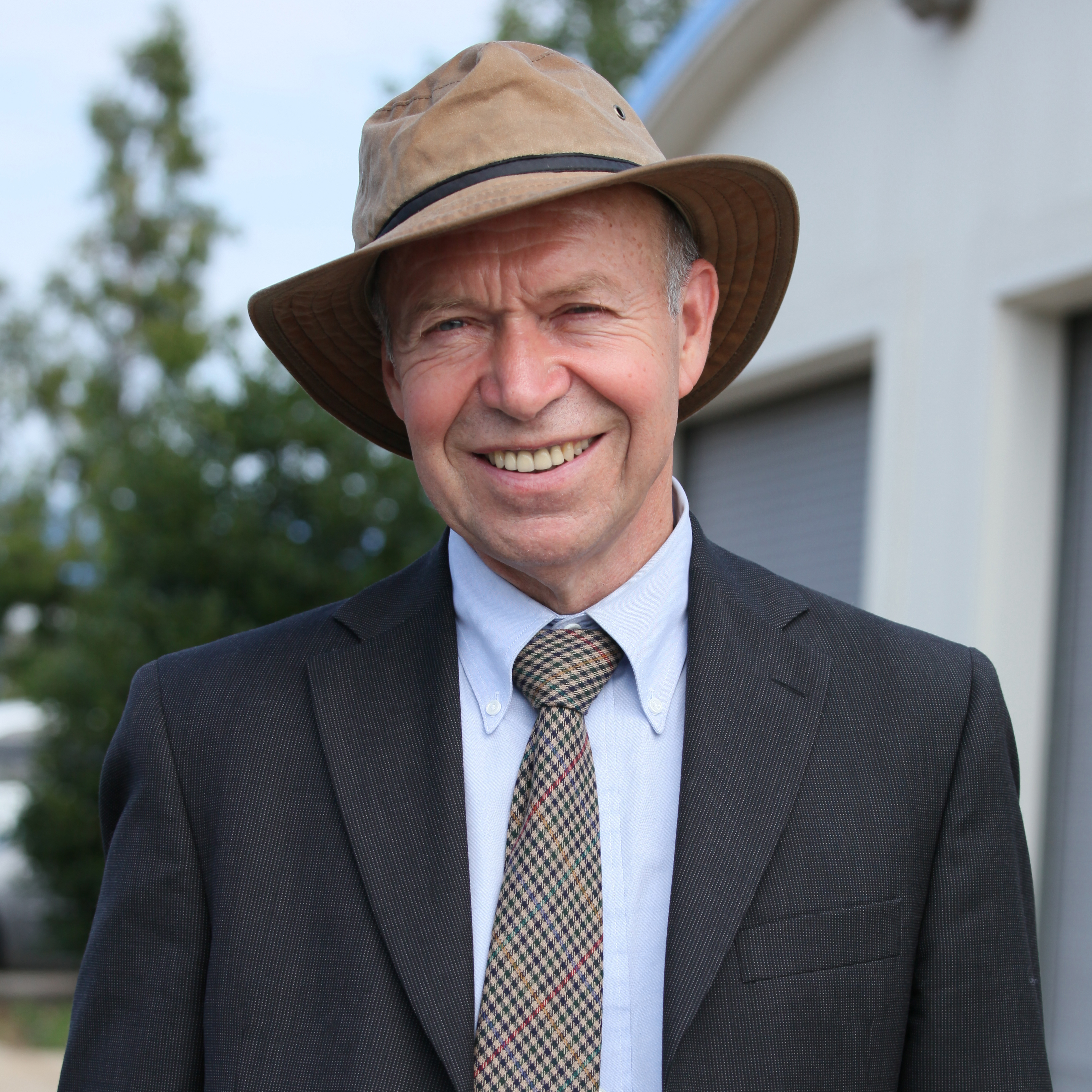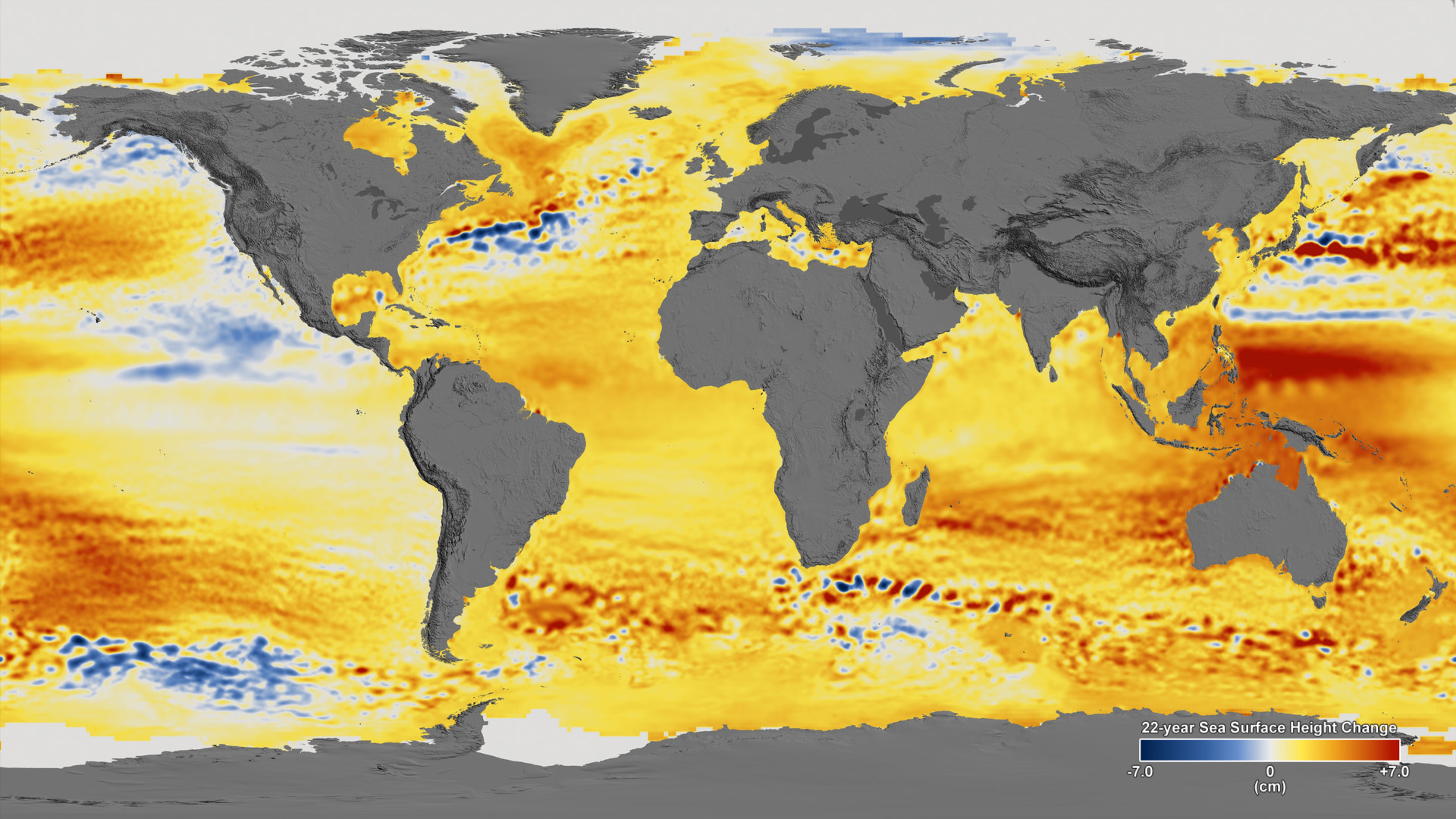Climate scientist James Hansen has been a prominent figure in the global climate conversation for more than 40 years. His 1988 congressional testimony on climate change helped introduce the problem of rising greenhouse gas emissions to the American public, and he has led study after study examining exactly how our world will change as a result of global warming.
Eight years ago, however, Hansen made the rare decision to begin engaging in climate activism, and he has since protested mountaintop removal in West Virginia and gotten arrested outside the White House in a rally against the Keystone XL pipeline.

His actions have earned him both praise and criticism from the media and scientific community. Recent scientific endeavors of his — including a study last month that was publicized prior to being peer-reviewed — have also generated controversy.
In an interview with Yale Environment 360 last week, Hansen, former director of the NASA Goddard Institute for Space Studies in New York, opened up about his unconventional career path, his frustration watching policymakers’ four decades of climate inaction, and what he believes the world could look like a century from now.
“I don’t think that I have been alarmist — maybe alarming, but I don’t think I’m an alarmist,” he said. “We have a society in which most people have become unable to understand or appreciate science, and partly that’s a communication problem, which we need to try to alleviate.”
Yale Environment 360: In a paper released last month in the journal Atmospheric Chemistry and Physics Discussion, you and colleagues argued that 2 degrees Celsius of warming could be “dangerous,” setting the stage for abrupt climatic changes. Can you describe more in detail what could happen under this scenario? What would the world look like?
James Hansen: We know from the earth’s history that 2 degrees would eventually lead to sea level rise of several meters. The last inner glacial period, 120,000 years ago, that’s the last time it was warmer than today, sea level was 6 to 9 meters higher — that would mean loss of almost all coastal cities. It’s unthinkable that we walk into such a situation with our eyes open, and yet, the science is very well understood.
There’s no argument about the fact that we will lose the coastal areas, now occupied by most of the large cities of the world. It’s only a question of how soon. That message, I don’t think, has been clearly brought to the policymakers and the public. More than 190 nations agreed [at the Paris climate conference last December] that we should avoid dangerous human-made climate change. That loss of coastal cities would be a dangerous outcome. It’s hard to imagine that the world will be governable if this happened relatively rapidly.
‘What we could not have guessed is the fact that the world’s governments would be so unresponsive to the increasing empirical evidence.’
What we conclude is that the timescale for ice-sheet disintegration is probably a lot shorter than has been assumed in the intergovernmental discussions.
e360: You started researching climate change back in the 1970s. Forty years later, could you ever have imagined the scientific community would be predicting sea level rise of several meters?
Hansen: I could imagine that we would be predicting that, but I’m disappointed that policy actions have not been achieved to deal with it. The first major paper that we published on climate was in 1981 in Science magazine . It focused on the fact that if we kept burning fossil fuels, burn most of the fossil fuels, it would guarantee sea level rise of many meters. We also talked about the amount of warming we expected, when it would rise above the level of natural variability, and the fact that the Arctic would lose its sea ice — we would open the fabled Northwest Passage, and there would be a creation of drought-prone regions in North America and Asia.
I remember commenting to my co-author, [NASA scientist] Andy Lacis, “Gee, by the time we’re retirement age, interesting things will be happening on our planet.” What we could not have guessed is the fact that the world’s governments would be so unresponsive to the increasing empirical evidence. No one expected that governments would react immediately when it was still just based on simple models 40 years ago, but now, it’s not just models. We can see what’s happening.
e360: It seems as though recently every new scientific article that comes out, every new headline that’s published on climate change and climate projections, it’s about this abrupt climate change. Is the idea of gradual climate change gone for good now?
Hansen: Some things do change gradually because of the inertia system. The global average temperature, if you average it over several years, is going up pretty smoothly, since the middle 1970s. January/February of this year, global temperature is now 1.3 degrees above the 1950-1980 average, but that was just two months. Averaged over the year, it’s going to be about 0.9 degrees Celsius, and that’s pretty much on this almost linear increase over the last four decades.

Locally and regionally you get abrupt events, which are the ones that have the biggest impact on people. The frequency and severity of extreme events increase as the planet continues to get warmer. Sea level and ice-sheet disintegration is also a very nonlinear process. It’s going to lead to rapid change within the next several decades. The other thing we point out is that the fresh water coming off of Greenland and Antarctica is affecting the ocean circulation. Normally in the winter at the polar regions, it gets cold, the salt in the ocean water gets dense, and will sink toward ocean bottom, and that drives this overturning ocean circulation or conveyor belt. I think there’s a danger that if we keep adding greenhouse gases, that we will get shutdown in the AMOC, Atlantic Meridian Overturning Circulation, sooner than the model indicates. It’s very interesting scientifically, but it’s very threatening.
e360: You and your colleagues publicized the Atmospheric Chemistry and Physics Discussion study last July, before it had undergone peer review — and received a lot of criticism for doing so. Why did you choose to do that?
Hansen: Because there was going to be a United Nations meeting in December, and we thought these are important considerations that should be included. It makes the urgency of actions clearer. This is a perfectly legitimate. That’s the great thing about the journal that we submitted it to, Atmospheric Chemistry and Physics Discussion. If an appropriate editor looks at it and decides that it appears to be reasonable, then they publish it. It’s available to anyone in the world. The whole idea is to get discussion, to improve the final paper that comes out.
There’s absolutely nothing wrong with this. It is frustrating that some scientists find it objectionable. I think it’s exactly the right thing to do, and I think other people should do the same thing, if they have a paper that’s important to get the discussion out there.
e360: I know one of the biggest issues with climate denialists have been that they publish studies, but often these are not in peer-reviewed journals.
‘I find people want to criticize, and they are welcome to do that, but I will gladly do the same thing again.’
Did you and your colleagues worry at all that following a similar route, publicizing it before it became peer reviewed, might undercut the credibility of the research?
Hansen: It shouldn’t. It should increase the credibility. If you’ve got more opportunity for people to criticize it and to make suggestions, it becomes all the stronger. I find people want to criticize, and they are welcome to do that, but I will gladly do the same thing again.
e360: You support nuclear energy, but many environmentalists don’t. What’s your argument for supporting it?
Hansen: It’s very interesting that environmentalists have become anti-nuclear. If you go back to the middle of last century, environmentalists, at least some of them, pointed out that nuclear energy was probably the best option for the future because it has the smallest footprint on the environment. A ping-pong-ball-sized piece of uranium contains enough energy for a person who lives to be 100 years old. Unlike fossil fuels, it doesn’t dump greenhouse gases and aerosols into the atmosphere.
We in the West raised our standard of living by burning fossil fuels. If the rest of the world does the same thing, we’re all cooked. China and India know very well they can’t get all the energy they need from the sun and the wind — those are useful and they should be part of the clean energy that the world needs, but they’re intermittent. They’re not a complete solution.
e360: Some people have criticized you for being an alarmist, for using the extremes of climate scenarios when you talk to the media and the public. Do you worry at all that this can be counterproductive? That by saying things like Keystone XL would be “game over for climate,” it causes people to throw their hands up in despair and say, “We can’t do anything anyway. It’s too big of a problem”?
Hansen: The scientific community is getting more and more concerned about the fact that we’re pushing the system beyond tipping points and things are happening. I don’t think that I have been alarmist — maybe alarming, but I don’t think I’m an alarmist. The point of the Keystone XL pipeline comment was that we cannot burn the unconventional fossil fuels without ensuring that young people inherit a situation out of their control.
e360: When you look at the climate projections for the next 100 years, for your grandchildren’s lifetimes, do you think that we have the time and motivation to adapt?
‘I don’t recommend that all scientists, especially young ones, get arrested. I can afford to do that since I’m beyond retirement age.’
Hansen: Some climate change is obviously going to occur which we have to adapt to, but the things you cannot adapt to are what I call the irreparable harm. There are specifically two things that I focus on: One of them we’ve talked about, that’s sea level rise. If ice sheets become unstable, it would cause continually rising sea levels with economic implications that are incalculable. That’s irreparable harm to young people. The other thing is extermination of species. If we keep burning fossil fuels business-as-usual, then the climate zones shift fast enough and far enough that it will, in combination with the other stresses on species, cause extermination of a significant fraction of species on the planet. It’ll be a much less desirable planet if we drive many species to extinction.
e360: You balance between being a scientist and an activist, a position that many researchers are reluctant to take. When did you feel like you had to take more of an activist role?
Hansen: I don’t recommend that all scientists, especially young ones, go out and get arrested. I can afford to do that since I’m beyond retirement age. The first time I got arrested was after young people at Virginia Tech told me about Larry Gibson, who was this man who had a cabin on Kayford Mountain [in West Virginia] and was blocking coal companies by refusing to sell his land. Mountaintop removal is like tar sands. It’s a crazy thing. The amount of pollution that you produce locally at the place where you’re taking the stuff out of the ground is enormous. They’re destroying the groundwater in the surrounding areas. They push the top of the mountains into the valleys where the streams are. The health of people living in West Virginia is significantly impacted by that practice.
e360: Did you feel it hurt you within the scientific community when you started engaging in activism?
Hansen: I don’t think so. It’s a little surprising to me that the scientific community objected to our recent paper being publicized before the final version was available, but other than that it has been very supportive.
‘There’s no way we can burn all that’s available without guaranteeing that it’s a completely different planet.’
e360: You talked about young scientists maybe not getting into activism, but do you think that this is a role more scientists need to take?
Hansen: I do think that more scientists need to be as clear as they can in communicating the implications of the science to the public. All ages of scientists can do that. We have a society in which most people have become unable to understand or appreciate science, and partly that’s a communication problem which we need to try to alleviate.
e360: Fast forwarding a bit to November. Polls show more and more people are concerned about climate change in this country on both sides of the aisle, but the issue has yet to be a major priority for Americans in the voting booth. What do you think would have to change in order for that to happen?
Hansen: Young people need to understand how much is at stake for them. It became a significant issue in the 2008 elections, not a major issue, but Barack Obama did address it in his campaigning. He did say we have a “planet in peril” a number of times. For a number of reasons, young people supported him, and that played a major role in his election. But they didn’t know what to ask after he was elected, and so the policies that were proposed by Obama were based on the policies advocated by Big Green, such as cap and trade, and that unfortunately is completely inadequate. The next time around, after this next election, we had better make sure that the new administration understands not only what the problem is, but what will work and what won’t work in solutions.
e360: Has the major boom in fracking and in the release of methane into our atmosphere changed how scientists understand and predict climate change impacts? Was this even a factor a decade ago?
Hansen: Fracking has changed the story in a major way. There were scientists who were arguing, “We’re at peak oil, peak gas,” and so the climate problem will diminish in the future because we’re running out of fossil fuels. The fossil fuel industry figured out ways to get a lot more out of the ground, and there’s a lot more down there.
ALSO FROM YALE e360Rethinking Urban Landscapes To Adapt to Rising Sea Levels

There’s no way we can burn all that’s available without guaranteeing that it’s a completely different planet. Fracking and tar sands, what I would call unconventional fossil fuels, we just can’t afford to burn them.
If it were really a bridge that allowed us to close coal, use gas for a little while, while we developed zero carbon energies, that would not be insensible — but that’s not what’s actually happening. We’re still burning coal, and we’re burning more gas.
e360: Is there anything else you would like to mention?
Hansen: The one thing, which is most important, is the assertion by the fossil fuel industry and the people who support them, that it would be expensive to solve the problem, is absolutely wrong. There have been economic studies that show if you add a gradually rising fee to fossil fuels, by collecting a fee on fossil fuel companies at the source, the domestic mine, or port of entry, and if you distribute the money to the public, an equal amount to all legal residents, it would actually spur the economy. It would increase the gross domestic product and add millions of jobs. We need to have such a common sense solution, which is revenue neutral, so it doesn’t make the government bigger. Instead of proposing taxes or regulations that conservatives will fight tooth and nail, we should find an approach that both liberals and conservatives would be willing to support. That’s what needs to be understood, that it’s not painful to solve this problem if we are smart, but we have to think this through.
Katherine Bagley, who conducted this interview, is the web editor of Yale Environment 360.